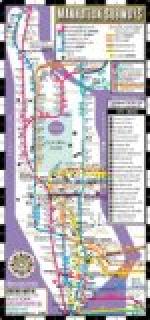The several depressions at which it is necessary to maintain a pumping plant are enumerated as follows:
No. 1—Sump at the lowest point on City Hall Loop.
No. 2—Sump at intersection of Elm and White Streets.
No. 3—Sump at 38th Street in the Murray Hill Tunnel.
No. 4—Sump at intersection of 46th Street and Broadway.
No. 5—Sump at intersection of 116th Street and Lenox Avenue.
No. 6—Sump at intersection of 142d Street and Lenox Avenue.
No. 7—Sump at intersection of 147th Street and Lenox Avenue.
No. 8—Sump at about 144th Street in Harlem River approach.
No. 9—Sump at the center of the Harlem River Tunnel.
No. 10—Sump at intersection of Gerard Avenue and 149th Street.
In addition to the above mentioned sumps, where pumping plants are maintained, it is necessary to maintain pumping plants at the following points:
Location No. 1—At
the cable tunnel constructed under the
Subway at 23d Street
and Fourth Avenue.
Location No. 2—At the sub-subway at 42d Street and Broadway.
Location No. 3—At
the portal of the Lenox Avenue extension
at 148th Street.
Location No. 4—At the southerly end of the Harlem River tube.
Location No. 5—At the northerly end of the Harlem River tube.
Location No. 6—At the portal at Bergen Avenue and 149th Street.
In the case of the No. 1 sump a direct-connected electric triple-plunger pump is employed, situated in a pump room about 40 feet distant from the sump pit. In the case of Nos. 2, 4, and 7 sumps, automatic air lifts are employed. This apparatus is placed in those sump wells which are not easily accessible, and the air lift was selected for the reason that no moving parts are conveyed in the air-lift construction other than the movable ball float and valve which control the device. The air lift consists of concentric piping extending several feet into the ground below the bottom of the well, and the water is elevated by the air producing a rising column of water of less specific weight than the descending column of water which is in the pipe extending below the bottom of the sump well.
In the case of Nos. 3 and 5 sumps, and for Location No. 1, automatic air-operated ejectors have been employed, for the reason that the conditions did not warrant the employment of air lifts or electric or air-operated pumps.
In the case of Nos. 6, 8, 9, and 10 sumps and for Locations Nos. 2, 4, and 5, air-operated reciprocating pumps will be employed. These pumps will be placed in readily accessible locations, where air lifts could not be used, and this type of pump was selected as being the most reliable device to employ.
In the case of Location No. 3, where provision has to be made to prevent a large amount of yard drainage, during a storm, from entering the tunnel where it descends from the portal, it was considered best to employ large submerged centrifugal pumps, operated by reciprocating air engines. Also for the portal, at Location No. 6, similar centrifugal pumps will be employed, but as compressed air is not available at this point, these pumps will be operated by electric motors.




